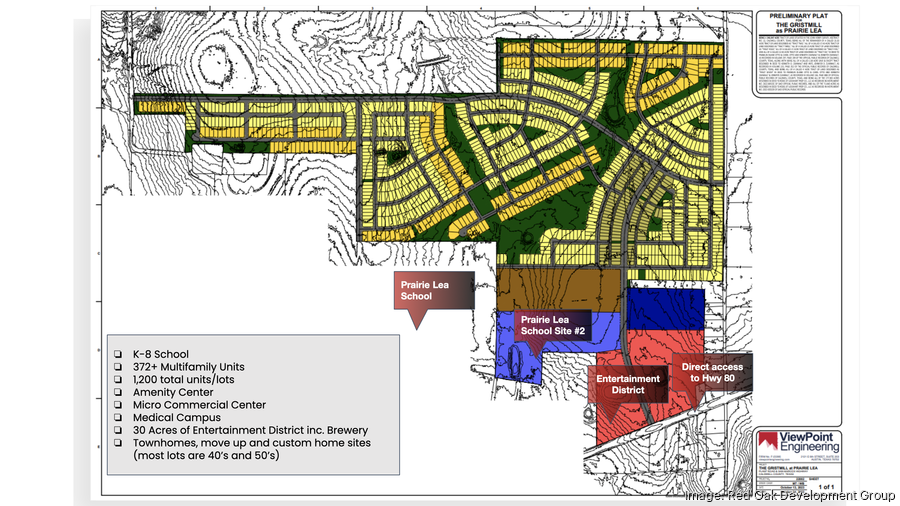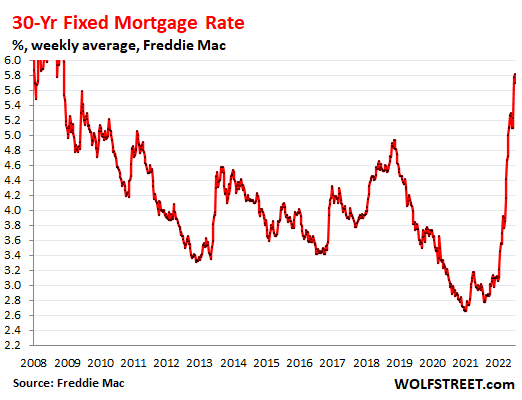346-acre Caldwell County project part of $15B plan to build 'mini cities' around Austin, Dallas

On the heels of announcing a plan to invest $15 billion to essentially build 10 mini-cities around Central Texas, it might come as a surprise to hear Red Oak Development Group CEO Tom Staub admit he fully understands he didn’t pick a great time to do it.
He listed off the reasons: Many developers are not buying land because of high prices. Builders are being cautious about what projects they are taking on because of rising construction costs. Existing home sales are reaching decades-long lows. Mortgage rates at 8% are making home-buying difficult, and more.
“It seems so contrarian to go out there and do this now,” Staub said. “But doing this now puts lots on the ground in 12-to-18 months. So, really, it’s positioning ourselves to have the bulk of supply in Austin for builders going into 2025 and 2026. So timing couldn’t be worse if you’re thinking right now, but it couldn’t be better two or three years out.”
That effort is ramping up. The Austin-based developer on Oct. 24 secured unanimous approval from the Caldwell County Commissioners Court for a development agreement to build a 346-acre project the development group is calling “The Gristmill at Prairie Lea.” It would rise at the corner of Plant Road and San Marcos Highway. It’s set to include single-family and multifamily housing, a school site, an entertainment district and much more in a rural swath of the county southeast of Austin.
It’s the second project under the umbrella of Red Oak’s Project Lone Star, along with Seawillow Ranch in Lockhart, which is prepping a second phase. Essentially what Staub and his partners are doing is trying to build 10 small cities primarily in less-developed areas around Austin and Dallas — and potentially other parts of the state. While they’re still evaluating potential locales, Staub said the investment – all privately financed – could reach $15 billion, or about $1.5 billion a project.
They are partnering with cities and economic development corporations on the projects to attract jobs and school districts that will create school sites. They’re earmarking housing for teachers and courting medical providers to create small offices and hospitals, and commercial builders are being sought to create entertainment districts.
Each project is set to be between 200 and 800 acres, with a 70%/30% split between residential and other mixes. Staub estimated that when it’s all said and done, it will result in $10 billion-plus in economic impact, create six medical campuses, 10,000 total jobs, 500-plus homes for teachers and at least 10 school sites.
Staub said a lot of those ideas were spurred out of community surveys, where respondents expressed a desire to keep aspects of their lives proximate. That’s conveyed in site plans, accomplishing that by creating walkable and bikeable neighborhoods, having amenities like dentists, schools and cafes close to each other, alongside a network of trail systems.
While they’re starting south of Austin, the plan is to next go north. They’ve spoken with economic development leaders in Liberty Hill, Georgetown and Hutto, and Staub said they will select at least two of the three.
“It truly is redefining what walkable and interconnected means,” he said. “I think our communities are really going to stand out throughout Austin because our design structure is based on that entire concept. We’re hoping that Prairie Lea and Lockhart are the first iconic, truly walkable interconnected communities within the MSA.”
It’s not the first project like it. Ari Rastegar is working on a network of similar concepts. His first development is underway in Kyle, and Rastegar has said he has thousands of acres under contract around Austin, where he plans to go next.

Red Oak Development says The Gristmill at Prairie Lea is one of 10 mini-cities it aims to build around Texas.
‘The Gristmill’ to transform area
The Red Oak portfolio is soon to include the project in Prairie Lea. The unincorporated community is about 50 miles south of Austin and is the oldest community in Caldwell County. Its economy was historically dominated by milling, including the cotton gin and gristmill (the namesake for the project), and nearby oil drilling in Luling. Its population has remained around a couple hundred over the last century.
When they were crafting the Lone Star idea about three years ago, Staub said they were looking at all the areas around Austin. They found it too hard to build west of Interstate 35 because of land prices, impervious coverage requirements and a lack of water. They like the area north of Austin because of Williamson County’s rapid growth, but that’s led to rising land prices and questions about water. The area east of I-35, like Bastrop County, was enticing – but ultimately wasn’t a better option than the region south.
It’s an area that is ripe with affordable land prices, a need for homes due to industrial growth in areas like San Marcos, Kyle and Lockhart, and has great municipalities to work with from a development perspective, Staub said. The only hindrance in Prairie Lea was school district capacity, which they wanted to help with. That way, everything “checked out for us,” he said.
“That (Highway) 80/(State Highway) 130 corridor, we’re already seeing it quickly becoming an industrial hub,” Staub said. “We got bullish on that a long-time ago, and we know that industrial needs housing.”
The development agreement for the Gristmill at Prairie Lea – with RODG DT Lockhart PropCo LLC, a Red Oak affiliate – stipulates that they can build a maximum of 1,300 residential units; have 51 acres of open space, including at least 4,000 linear feet of natural trails and quarter-acre pocket parks for each units; and 20 acres for an amenity center and K-8 school site for Prairie Lea Independent School District.
Others involved in the project include David Teo and Cody Payne, partners at Red Oak, and Luke Caraway, president of Viewpoint Engineering, which is handling engineering, development and design.
Officials noted the project will have up to 400,000 square feet on 28 acres of commercial space, including a micro-commercial center, amphitheater, variety of medical clinics and a brewery; 377 multi-family units on about 15 acres (or an additional 100 residential units); a 10-acre water treatment plant and water tower; and more. Home sites will be primarily alley-loaded and will range in size from 35 to 60-foot lots, with up to 30 homes set aside for school district teachers.
Officials said there are still other things they need to secure before breaking ground by next July, including establishing a Municipal Utility District for the site, which they plan to file for in November. But they want to finish the buildout of the site by 2031.
Staub said the hardest part about the actual development of the Lone Star projects is completing the commercial development in early phases, as it’s typically some of the final parts of a concept to get built. He said they’ve worked out unique partnership structures where they become silent partners in the commercial space using the land as equity, and it’s contingent upon the projects being completed.
“Commercial development is going to be a trick and a hurdle in every one of the communities and that’s the same with Prairie Lea,” he said.
But he said once the project is done, it will join others in the region to put Prairie Lea back on the map.
“That whole corridor is about to explode in the next three or four years,” Staub said. “What we’re really trying to do is get ahead of the curve in all of these communities and say instead of having a slap-stick all-home community, let’s truly build the icon of what I think future communities are.”
| Rank | Prior Rank | Property |
|---|---|---|
|
1 |
1 |
I-35/CR 313/Sonterra Blvd., Jarrell, Texas |
|
2 |
2 |
Hwy. 29/Ronald Reagan Blvd./Elizabeth Park Blvd., Liberty HIll, Texas |
|
3 |
3 |
N/A, Bastrop, Texas |


